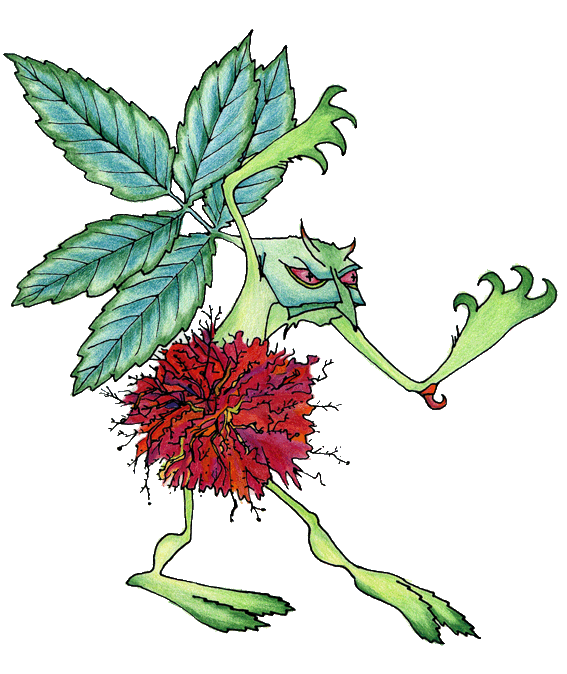| Albugo candida is a fungus that causes thickening of all parts of Capsella bursa-pastoris (and many other Crucifers) and white colouration of these thickened parts. It infects the stem, leaves, flowers and fruits. | | 
on Capsella bursa-pastoris
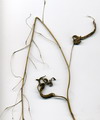

on Diplotaxis tenuifolia
|
| | |
|
| Claviceps purpurea is a fungi that can be often found on grasses. They are rather common on Lolium perenne and Phleum pratense (Timotee grass). The fruit bodies stick out of the flowers like black sticks and when you see them on Spartina, they are slightly bend, like bananas, and quite a lot bigger. | | 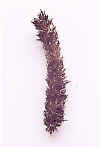
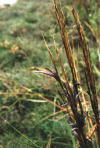
Picture: R.J. Koops
|
|
| Exobasiudium juelianum is one of the Exobasidiums mainly occuring on Ericaceae. This species is very particulair for Vaccinium vitis-idae. The top leaves of a branch because deformed by the fungus and coloured white-pink and sort of powdery. Rare. | | 

Picture: S. Visser
|
|
| Gymnosporangium cornutum I first found in the Pyrenees and in Norway on Sorbus aucuparia, but you can also find it in NL. The swellings are orange and can be found on the top of and underneath the leaves and on the leaf stems petioles. Swellings are especially visible on the lower surface and show aecidia. | | 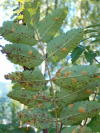 Picture: P. Koster Picture: P. Koster
|
| | |
|
| Melamsora epitea causes bright yellow orange, slightly thickened, irregular spots bearing aecia on the leaves of Euonymus europaeus, spindle. | | 

|
|
| Puccinia adoxae causes deformations on Adoxa moschatellina in early Spring (April-May). The galls are common in places where this plant grows, which is usually on estates and stinsen in the Netherlands. The galls appear like deformed and zwollen plants or plant parts, bearing brwon telia. | | 

|
|
| Puccinia aegopodii is common on the leaves and stems of Aegopodium podagraria. The galls are pale yellow white swellings bearing brown telia powder when mature. | | 

|
|
| Puccinia caricina can cause swellings on different plant species. Well known are the bright orange to red colored structures on Urtica dioica. Varieties of this species can cause galls on fruit and leaves of Ribes. Galls in May untill August. This species moves to Carex. | | 

On Ribes nigra

On Urtica dioica
|
|
| Puccinia cnici-oleracei causes these lovely pale bulges on the veins and stems ofAster tripolium. When the galls mature they become covered with brown black spores. | | 
Foto: E. van der Ploeg |
|
| Puccinia coronata on Rhamnus frangula at Suameer, Friesland. These pictures show the fungus in its full glory, when the colors are most spectacular. One week later, a friend showed me a specimen that was already turning more orange and brown. The galls are a few centimeters in length and covered with aecidia. They occur on the tops of young branches and leaves in May and June. The funges migrates to grasses. | | 
 (Pictures: B. Kabbes) (Pictures: B. Kabbes)
|
|
| Taphrina alni is a fantastic and rather common species of fungi on Alder (Alnus glutinosa). The gall developes (in the female catkins) from the ovary and emerges from between the outer scales like a flat shaped elongated flag with a hard and slightly shiny surface. The surface is smooth, lacking any hairs. The outer edges are rounded and the end is more broadened than the foot of the 'flag'. Early in the season the flag is fresh and green, but soon the colours start to vary from pale green to yellow, pink, red, purple and orange-like. Later the galls turn brown or more black and remains on the tree for a long time (until the next season). | |  Picture: B. Kabbes Picture: B. Kabbes


Picture's: H. Dikkema

Picture: H. Pras
|
|
| Taphrina padi is to be found on Prunus domestica and Prunus spinosa. The fruits become swollen and deformed like an aubergine and turn from green to white to brown. | |  (Pictures: H. Slegten) |
|
| Triphragmidium ulmariae is a bright orange red coloured fungus on Filipendula ulmaria. The leaves are twisted and contorted, bearing bright orange red aecia. | | |
|
| Urocystis syncocca (hepaticae-trilobae) forms flat and circular swellings on top of the leaf of liverleaf (Hepatica nobilis) that break open to release black powdery spores. The galls on the picture are found at Santa Cruz de la Serós, at Punta dÁuguasalient on approximately 1500 m above sea level, in Spain. According to Redfern (et al. 2002) it is a rare species that can also grow on the stems and petioles of liverleaf. | | 

picture below: habitat of the fungus
(Pictures: Bauke Koole)
|
|
| Uromyces ficariae causes pale yellow swellings on leaf stems and both sides of leaves of Ficaria verna subsp. verna. Here close groups of telia develop and form a brown powder with spores. Galls in March untill June. | | 

|
|
| Uromyces rumicis or U. dactylidis cause yellow swellings on leaf stems and on the underside of leaves of Ficaria verna subsp. verna. Here pale orange groups of aecia develop. Galls in March untill June. Uromyces rumicis moves to large leaved Rumex species and U. dactylidis moves to grasses. | | 

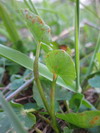
|
|
 Nederlands
Nederlands
